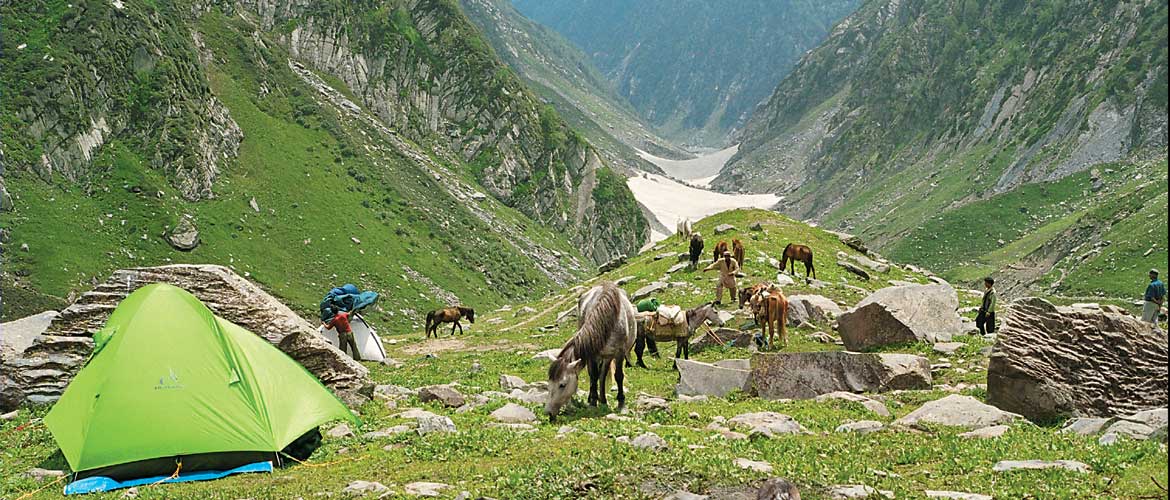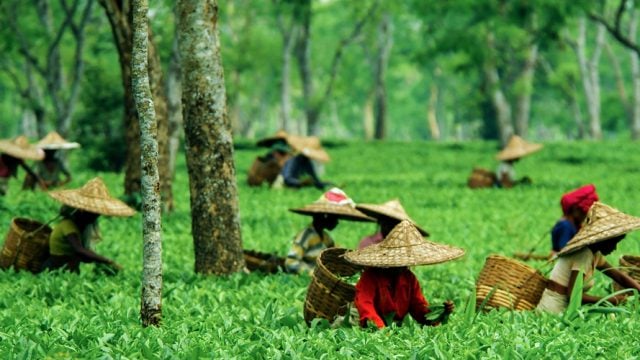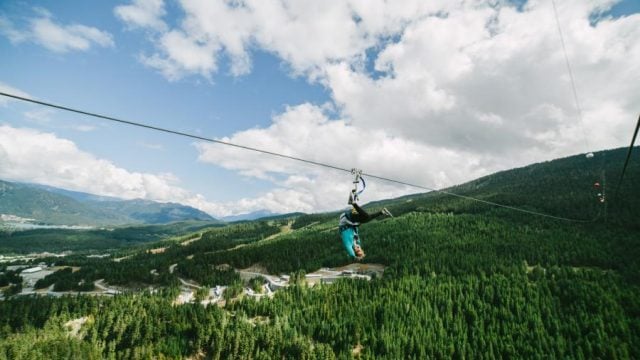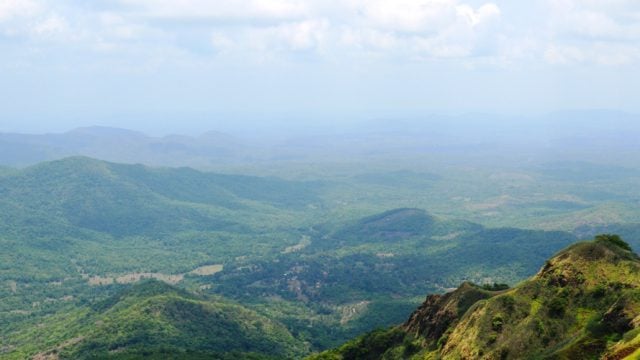Tips for the trail
the person in front of you. Start slowly and try to maintain an even pace. Rushing downhill only to crawl up will add to fatigue. If you are carrying your own backpack, try and stop no more than once every hour for 5–10 minutes. If you have only a daypack, then try and rest once every two hours for 10 minutes. But this doesn’t mean that you don’t stop for photos or to identify a bird or flower on the way. Remember, the secret of a great trek is enjoying the walk and not simply trying to get to the campsite at the end of the day.

- If you are likely to be walking in snow, gaiters can be devised with plastic and elastic bands. Wrap the plastic around your calves from the knee to the top of your boots and secure with elastic bands. Ensure that the plastic goes well over the top of your boots till your laces. This will keep your legs dry and prevent snow from slipping into your boots from the top.
- Carry dental floss. This can be used in an emergency to replace anything from broken shoelaces to guy ropes for your tent to securing a splint in case of a broken leg.
- Carry a bag of salt in your pockets if you are walking in leech-infested areas.
- Don’t think you can make it up that hill? Carry sweets, toffees and dry fruit in your pockets for quick energy boosts.
- Carry enough water for the day. If you know where the springs are, try to avoid drinking untreated water from mountain streams. In Kinnaur, I was in bliss, drinking plenty of water from sparkling mountain streams only to discover, as I climbed higher, that a number of villages had their bath houses located on stilts directly over the same streams!
- One can use a few drops of chlorine or iodine (8 drops/ litre or Betadine 4 drops/ litre) to purify the water, but along with microbes, they also kill the taste of water. Pregnant women or those with thyroid problems are advised not to use iodine.
- The best way to purify water is to boil some in the morning before starting the trek and then some in the evening when you arrive at the camp. This should take care of the entire day and night’s requirements. Heat kills micro-organisms at temperatures well below the boiling point. Don’t waste your kerosene on boiling water for 10–20 minutes. Bringing it to a boil is good enough to kill all the bugs.
- Carry some Betadine or iodine to purify water in case of an emergency, if you start running short of fuel for instance.
CAMPING TIPS
- Always check your stove before you leave. If it’s a new stove, try it out at home. Make some tea, porridge, khichdi and boil some water. See how much fuel it consumes and calculate how much you will need on the trip. No point carrying gallons of kerosene that you won’t use, but do remember that the higher you go, the longer it takes for water to come to a boil and therefore, the greater will be the fuel consumption.
- Pack your backpack intelligently so that the weight is balanced vertically with heavier items on top. Pack heavy things towards the inner side of the backpack, closer to your body, so that the weight does not pull it outwards. Keep sandals (if you have a river crossing that day) and other important items in the easier-to-reach outer pockets.
- Try and camp in the campsites that we have recommended in the book. Avoid pitching camp in dry gullies, which may turn into raging torrents if the weather changes. Also, avoid camping under rock faces and cliffs that may have rock falls or avalanches.
- When pitching a tent, try and find a well-drained area, not likely to get waterlogged in case of a sudden shower. If you anticipate bad weather at night, dig a two- to three-inch drain around the tent with one end leading off a foot or two, preferably downslope.
- In case you are caught in a sudden thunderstorm, try and find shelter: an overhang of the mountain, a small cave, a large rock or tree. The idea is to stay dry, and more importantly in the Himalayas, to stay warm. Always carry a sheet of plastic in areas likely to be wet. It should be large enough to go over the backpack to keep it dry as well.
- Personal hygiene is important on a trek. Men have the good fortune of being able to jump into any mountain stream for a swim. Women should carry a sarong that they can slip into. This can be used as a cover to slip out of your trekking clothes. Find a bend in the river, away from prying eyes and bathe to your heart’s content. In case the weather is too cold or the pace of the trek doesn’t allow it, do what I do at the end of each day. After your tent is up, take a mug of warm water, a hand towel and some soap, and zip yourself in. Sponge yourself thoroughly, soaping your groin and armpits. Brush out dust from your hair. Then change into your nightclothes and a fresh pair of socks. You’ll be amazed at how the day’s fatigue leaves the body and just how refreshed you feel.
camping
Himalaya
OT Getaway Guides





